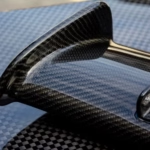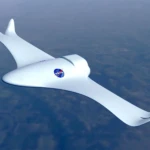Utilization accuracy: Your expert guide to China’s copper CNC machining and why Greatlime is good at
Copper and its alloys remain the fundamental material for countless industries – from conductive components of cutting-edge electronics to durable accessories for demanding piping and HVAC systems. The inherent properties of copper, such as its excellent electrical and thermal conductivity, corrosion resistance, processability and aesthetic appeal, make it essential. However, it takes professional expertise and equipment to work with this multifunctional metal into strict specifications. Building on decades of experience in precise metalworking, this guide examines the nuances of China’s copper CNC machining, highlighting why working with experts like Greatlight ensures unparalleled results.
Understanding copper: More than just a material
Before processing begins, choosing the right copper alloy is the most important thing. Each variant provides different characteristics:
- Pure copper (C10100, C11000): Known for its highest electrical and thermal conductivity. Soft and ductile, but easily hardened and challenging chip formation during machining. Ideal for power conductors, busbars and heat exchangers, requiring pure conductivity.
- Free installation of brass (C36000): Gold standard for easy processing. Lead-copper alloys provide superior chip rupture, excellent surface finish, good strength and corrosion resistance. Widely used in valves, accessories, connectors and complex decorative components. (The most common copper alloy).
- Phosphate Bronze (C51000, C54400): It has excellent strength, fatigue resistance, excellent wear characteristics and good corrosion resistance (especially for brine). Harder than brass, demands sharper tools, but is perfect for springs, bushings, bearings and marine components.
- Beryllium Copper (C17200): High-strength high conductivity solution. It can heat-treated for incredible tensile strength, with excellent fatigue resistance and non-jet properties. Due to beryllium content and precise processing parameters, careful processing is required. Crucial for aerospace parts, springs, molds and non-shielding tools.
- Aluminum Bronze: Excellent strength, corrosion resistance (especially for acids and seawater), and wear resistance. Challenging machines due to toughness, but it is crucial to demand marine, chemical processing and heavy bearing applications.
The key role of five-axis CNC machining copper
While traditional 3-axis machining provides basic functionality, the five-axis CNC technology unlocks the full potential of precise copper parts, providing unique and often essential advantages:
- Complex geometry mastery: Five-axis machining allows cutting tools to approach the workpiece from almost any direction in a single setup. For complex copper parts, such as complex connector housings, contour radiators or impellers with undercuts, multiple precise settings are required on a 3-axis machine, which is essential.
- Top surface finish: The ability to continuously maintain the optimal tool engagement angle between complex profiles can significantly improve surface quality. This minimizes tool marking and vibration, which is essential for parts that require high aesthetic appeal or tightly sealed surfaces. Stable tool path execution for advanced five-axis computers is key.
- Reduce setup and lead time: Complex parts often require a lot of setup on lower machines, increasing processing time and potential registration errors. Five-axis machining consolidates the operation into fewer settings (usually one), greatly reducing lead times and improving overall part accuracy.
- Enhanced tool life and productivity: Continuous smooth motion and the ability to optimally position parts relative to the tool reduce vibration and allow for more consistent cutting loads. This extends tool life and can increase material removal and improve productivity, especially in the case of tricky gel-like copper.
- Minimize working hardening: Pure copper and some alloys work easily when cutting. Five-axis allows for maintaining a constant chip load and effective cooling applications, mitigating this problem and improving dimensional stability.
Successful optimization of copper CNC processing
Key factors need to be paid attention to when achieving high-quality copper machining parts:
- Tool selection and speed/feed (SFM fundamentals):
- tool: Sharp cutting edges and regular tiles and polished flutes are essential to minimize built-in edges (BUE) and cleanly shear the material. Carbides are standard. For brass, specific high-speed steel can sometimes be effective. Diamond coating or PCD tools are excellent for large capacity or large copper applications.
- Speed and Feedback: Copper alloys vary greatly. Freely decorated brass (C36000) can be processed relatively quickly. Pure copper requires moderate speed/feed and high positive rake angles to prevent work hardening and adhesion. Beryllium copper requires more conservative parameters. understand Why It is crucial to choose a specific SFM (surface foot per minute) range for each alloy, not just following a common chart. Chip thinning computing becomes critical on five-axis paths.
- Chip control is king: Long debris in pure copper is the main danger (surround, re-cut). The brass chip that is free to experience should ideally be broken down into small "c"s. Effective strategies include:
- Use circuit breakers on the insert.
- Optimize feed rate and cutting depth (ADOC/RDOC).
- Apply high pressure coolant effective against the incision.
- Labor and rigidity: Copper is relatively soft. Safe fixation is essential to prevent partial movement or distortion during processing, especially for thin walls or complex shapes. A special vacuum disc or custom fixture is usually required. Five-axis machines inherently require powerful fixing solutions.
- Thermal management: Although copper performs good heat, local heating at the tip edge can be important. Rich coolant (usually soluble oils or synthetics) is essential not only for cooling, but also for chip evacuation, lubrication and prevention wells.
- Post-processing: Copper parts may require various completion steps:
- Deburring: Essential for sharp edges, it usually requires manual tumbling, vibration or professional processes.
- Polishing/Polishing: To enhance aesthetics or reduce surface roughness.
- Plating/coating: Tin, nickel, silver or gold-plated, solderable, corrosion or electrical contact reinforcement.
- Prevent oxidation: Passivate or apply protective coatings to prevent damage.
Why China? Utilize expertise, scale and technology
China has developed into a global manufacturing powerhouse, especially in Precision CNC processing. Advantages of purchasing copper CNC parts from China include:
- Unrivaled size and capacity: A large network of specialized machinery workshops can effectively handle quantity production.
- Advanced Manufacturing Infrastructure: A significant investment has been made in state-of-the-art equipment, including highly complex five-axis CNC centers, extensive automated post-processing lines and strict quality control laboratories.
- Material procurement intensity: With excellent logistical advantages, a wide range of copper alloys can be obtained from domestic and international factories.
- Technical expertise: Years of focus have trained skilled mechanics, programmers and manufacturing engineers specializing in nuances of a variety of materials, including copper alloys.
- Cost competitiveness: Due to the above factors, it is possible to achieve the composition of high-precision copper at a much lower cost than many of its Western counterparts.
Choose the right partner in China: Beyond the Machinery Workshop
choose any Chinese suppliers are not enough. Choose a partner who is specialized in Copper manufacturing and use Advanced five-axis technology It is crucial to success. The main considerations include:
- Material mastery: In-depth knowledge of processability, work hardening trends, post-processing requirements, and the best tools for specific copper alloys.
- Advanced five-axis expertise: Effective capability in programming and operating complex and complex five-axis machinery is effective and safely used in copper. Understanding kinematic abilities and limitations is key.
- Powerful quality system: ISO 9001:2015 and AS9100D, investment in precision metrology (CMM, surface roughness tester, optical comparator) and strict process control protocols.
- Engineering Partnership: Ability to participate in DFM analysis ("Design Manufacturability"), providing valuable insights to optimize the geometry of parts to achieve machining efficiency and cost without damaging functionality.
- Scalability and logistics: Expand or expand production capacity as needed, handle complex supply chains, and ensure reliable international transportation with expertise in documentation and logistics management.
GRESTHILE: Your first choice for copper CNC machining
exist GreatWe embody the pinnacle of modern Chinese precision manufacturing for copper parts. We are not only a mechanical workshop; we are specialized in manufacturing problem solvers who specialize in complex, highly resistant metal parts.
- Advanced five-axis expertise: Our core capabilities lie in the fleet of our state-of-the-art five-axis CNC machining centers (Kern Micro HD, DMG MORI, made in Switzerland). These machines offer unparalleled precision, stability, and the ability to effectively handle the most complex copper geometry in fewer settings.
- Deep material knowledge: Our engineers and mechanics have extensive, hard expertise in handling complete copper alloys – a close understanding of how to tame pure copper, optimize brass and conquer hard bronze and copper – the processing challenges of wafers.
- End-to-end solution provider: From CNC machining on our advanced equipment to precise turntables, sophisticated post-treatment (burr, polish, various plating options), coatings and comprehensive finishing services, we offer a seamless one-stop solution. We manage the entire process to ensure consistency and quality control at each stage.
- Designed for speed and value: Equipped with the latest technology and simplified process, we Rapid prototyping and rapid production runsquickly deliver precise parts without sacrificing quality. We are committed to providing Best Value – High performance at competitive prices.
- Commitment to quality: Quality is not just a checkbox; it is deeply rooted. We adhere to a strict quality management system and utilize advanced inspection equipment to ensure and exceed specifications and build trust and reliability in every component we ship.
Conclusion: Precision engineering copper solutions
Copper CNC machining, especially requiring precise work, requires complex geometry or specific material characteristics, not only standard mechanical workshops. It requires deep knowledge of materials science, advanced five-axis technology, good quality systems and partners dedicated to providing solutions. China has compelling advantages in scale, technology and expertise, making it a major source of high-quality, cost-effective copper parts.
When choosing a partner, prioritize those with proven expertise in the unique challenges of copper processing and investing in necessary advanced features. Greglight can be prepared as such a partner. We combine cutting-edge five-axis CNC machining with profound copper knowledge and provide a comprehensive service to effectively and cost-effectively solve your most challenging metal parts manufacturing problems.
FAQ: Chinese Copper CNC Processing
Q: What is the most common copper alloy for CNC processing?
A: Free loading brass (C36000) is by far the most common processing due to its excellent balance of machining, strength, corrosion resistance and cost. Phosphate bronze (C51000/C54400) is common for wear applications, while pure copper (C101/C110) is crucial for conductivity. Beryllium copper is suitable for high strength/conductivity needs.
Q: Why is five-axis CNC machining beneficial to copper parts?
A: Five-axis machining can create complex geometry in a single setup that significantly improves surface finishes on the profile, greatly reduces setup time and errors, enhances tool life with optimized cutting angles, and can help alleviate working hardening problems with pure copper by enabling better cooling and chip evacuation strategies.
Q: Is copper difficult to machine?
Answer: Copper alloys vary. Pure copper can be challenging due to its ductility, which can lead to hardening of chip chips and work. Free experience of brass is very easy. Depending on the specific composition, bronze alloys can be moderate to difficult. Success depends on the right tool, speed/feed and coolant strategies tailored to specific alloys.
Q: How to prevent work from hardening when processing pure copper?
A: Use sharp tools with high positive rake angles. Maintain adequate feed rate – Too slow will increase work hardening. Use the appropriate cutting depth. Ensure that the coolant application is directly used in the cutting area. Five-axis paths help maintain consistent engagement and reduce local heat and pressure.
Q: What surface finishes can be achieved on CNC machining copper parts?
A: Very fine finishes are possible, usually in the range of RA 0.2-1.6 microns, depending on the alloy, machine stiffness, tool, speed/feed and specific post-treatment steps such as polishing or polishing.
Q: Can Greatlight handle post-processing of copper parts?
Answer: Absolute. We offer a comprehensive in-house post-treatment including precision burrs, tumbling, polishing/polishing, a variety of gold plating options (TIN, nickel, silver, gold) for prevention of passivation of oxidation, engraving/marking and custom packaging.
Q: Which file formats do you accept for CNC processing quotes?
A: We use standard CAD formats (.stp), Iges (.igs), SolidWorks (.sldprt, .sldasm), Parasolid (.x_t, .x_b), and Filia (.3dm), and can also accept 2D graphs (.dxf, .dxf, .dwg).
Q: What is the typical lead time for CNC machining copper prototypes and production operations?
A: We are proud of our rapid turnover. Simple prototypes can usually be delivered Only 3-5 days. Complex parts or larger production volumes are usually from 2 to 5 weeksdepending on the details. Contact us for accurate quotes and schedules.
Q: How does Greatlight ensure quality control?
Answer: Quality is indispensable throughout the process. We adopt advanced inspection equipment (CMMS for 3D inspection, optical comparators, surface roughness testers, calibration instruments) and adhere to strict process control consistent with the quality management system. Detailed inspection reports (as needed, FAI, PPAP) are standard.
Are you ready to use the power of precision copper CNC processing? Great Leverage its advanced five-axis technology and deep material expertise to effectively, cost-effectively handle everything from rapid prototypes to complex production runs and comprehensive finishing solutions.

















